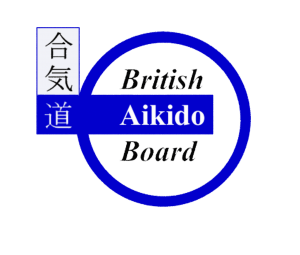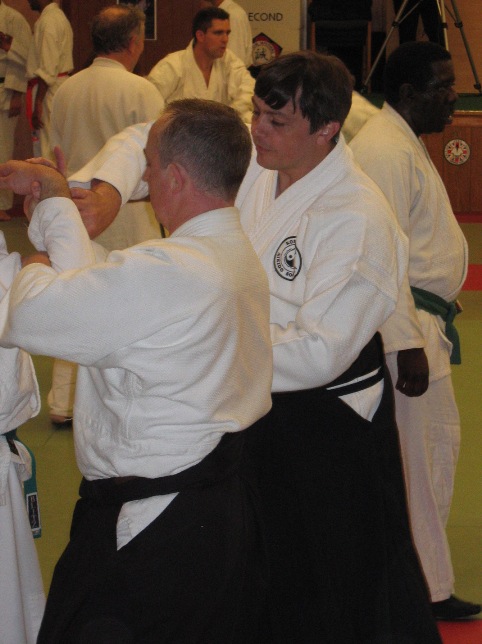Morihei Ueshiba and Kenji Tomiki

Among the many distinguished disciples of Morihei Ueshiba, the founder of aikido, Kenji Tomiki stands out for his intellectual stature and skill in articulating the historical and ethical rationale of the art. Whereas the founder viewed life and, consequently, his budo, mainly in religious terms, Professor Tomiki espoused a view of aikido which included competition and placed it within the larger context of the history of Japanese martial arts. An academician as well as an athlete, Tomiki authored several books and formulated a theoretical basis for aikido that was understandable by the average person. In this article we will briefly touch upon Professor Tomiki’s background, his relationship with Jigoro Kano and Morihei Ueshiba, and his contributions to present-day aikido.
Early Education
Kenji Tomiki was born to a family of landowners in Kakunodate, Akita Prefecture on March 15, 1900. It was there that he received his primary and secondary education by which time his academic and judo talents had already become evident. Following graduation from high school, he set out for Tokyo to prepare for university entrance examinations. After nearly four years lost to illness, he finally succeeded in entering Waseda University in 1923. Tomiki joined and became a standout member of the highly-touted Waseda Judo Club, advancing to the rank of fourth dan by his senior year. It was during this period that he began to frequent the Kodokan where he was exposed first-hand to the theories and methods of the great educator and founder of judo, Jigoro Kano. Professor Kano’s thinking had a profound effect on the young Tomiki, particularly his view of judo as a vehicle for self-improvement and health education. Tomiki would later expand on this philosophy of education and apply it in a unique way to aikido. His devotion to judo during his university days did not, however, cause him to neglect his studies and he maintained his academic standing being dubbed “the scholar from the sports division.”
Meeting aikido founder Morihei Ueshiba
It was in 1926 that he first met Morihei Ueshiba in Tokyo and was highly impressed by the latter’s mastery of jujutsu techniques. After graduation from Waseda in 1927 with a degree in political science, Tomiki entered graduate school majoring in economics. During the summer of that year he spent a month of intensive training in Daito-ryu aikijujutsu under Ueshiba Sensei at the Omoto headquarters in Ayabe, near Kyoto. For Tomiki, Ueshiba Sensei’s art included a huge body of essential jujutsu techniques which served as a vital complement to his judo training. Following completion of his formal education, Tomiki was employed by an electrical company in Sendai. In addition, he entered the prestigious Imperial (Tenranjiai) tournament in 1929 as the judo representative from Miyagi Prefecture and placed within the top 12 after being forced to withdraw due to an injury. Tomiki later became a junior high school teacher in his hometown of Kakunodate. While serving in this capacity between 1931-34, he would pass his summer and winter vacations in Tokyo training under Ueshiba Sensei. His sights set on Manchuria then under Japanese rule, Tomiki resigned his teaching post in 1934 and spent the next several years in Tokyo in preparation for his move. For a time he rented an apartment near the Kobukan Dojo of Ueshiba Sensei in Wakamatsu-cho and was one of the senior instructors. He also played a major role in preparing the manuscript of the 1933 manual of Ueshiba’s techniques entitled “Budo Renshu.”

To Manchuria
In the spring of 1938, Tomiki was appointed to the staff of the newly established Kenkoku University in what was then Shinkyo (present-day Choshun). Largely through Professor Tomiki’s efforts aiki training become a compulsory subject for students of judo and kendo, and therefore he sent for his close associate Hideo Oba, then a 5th dan, from Akita in order to develop a teaching corps. Moreover, Morihei Ueshiba made regular fall trips to Manchuria during these years also conducting classes at Kenkoku University. Professor Tomiki made great strides during the Manchuria years in fleshing out his theory of “rikaku taisei.” This term refers to the use of techniques for dealing with attacks by an opponent separated from the defender. This was part of Tomiki’s view of a “complete judo” which encompassed two parts: “grappling judo” (kumi judo) which equated to Kodokan Judo, and “separated judo” (hanare judo) which was equivalent to aikido.
The Waseda years
Following the end of the Second World war, Professor Tomiki was interned in a prison camp in the Soviet Union and did not return to Japan until the end of 1948. The next year he left for Tokyo soon renewing his ties with the Kokodan and later, in June of 1949, he joined the staff of Waseda University. Later, in June 1953, together with several high-ranking judo instructors, he journeyed to the United States on a teaching tour. Professor Tomiki continued experimenting and fine-tuning the theoretical basis for his aikido as director of the judo club during his tenure in the Waseda Physical Education Department. On February 26, 1958, as a result of Professor Tomiki’s efforts, Waseda University approved the creation of an aikido club, one of the conditions being that a method of competition be developed. Together with the members of the aikido club, he devised a form of competitive sparring where an attacker wielding a dagger attempted to score points against a weaponless adversary. It was this action on the part of Professor Tomiki of attempting to convert aikido into a sport that led to a schism with the founder Morihei Ueshiba and the Aikikai around this time. Professor Tomiki was urged by the Aikikai to adopt a different name for his art other than “aikido” if he intended to introduce such a system of competition. Convinced of the need to modernize aikido, he stood his ground and persisted in his efforts to evolve a viable form of competition.

As mentioned earlier, Professor Tomiki’s view of the martial arts with his personal emphasis on jujutsu as a means for edification of the individual was heavily influenced by Professor Kano’s philosophy. On the one hand, Tomiki regarded the traditional martial systems of Japan as feudalistic, brutal and thus unsuited for the modern age. Yet, at the same time, he wished to guarantee the survival in some form of these highly-refined technical traditions which had been developed over hundreds of years. His solution was therefore to modify the classical ryuha eliminating dangerous techniques without, however, losing sight of their historical rationale. The framework of modern physical education provided the ideal vehicle to accomplish this end. The practice of kata would permit the preservation and transmittal of the classical forms while competition insured that the trainee would gain a practical understanding of the application of offensive and defensive techniques. While the role of sports was significant in Professor Tomiki’s thinking, it formed only a part of his eclectic system. Moreover, he recognized the danger inherent in an over-emphasis on competition that spawned an undesirable “victory above all” attitude in participants.
Kenji Tomiki executing a technique on his successor Hideo Ohba
Professor Tomiki’s last years were devoted mainly to writing, teaching and actively participating in various organizations involved in research on the principles of physical education and Japanese martial arts. He also traveled to Australia in 1977 with his wife and one of his leading students, Mr. Fumiaki Shishida. His health began deteriorating in the summer of 1978 and he was forced to undergo an operation for what proved to be colon cancer. Even though gravely ill, he continued to stay active and this writer remembers spending a very pleasant and informative afternoon with him discussing his theories on March 10, 1979. Professor Tomiki breathed his last on December 24, 1979 leaving his closest disciple, Hideo Oba Sensei and the Nihon Aikido Renmei to carry on in his footsteps.
This article was originally written by Stanley Pranin who has kindly agreed to its reproduction here.
http://www.aikidojournal.com



